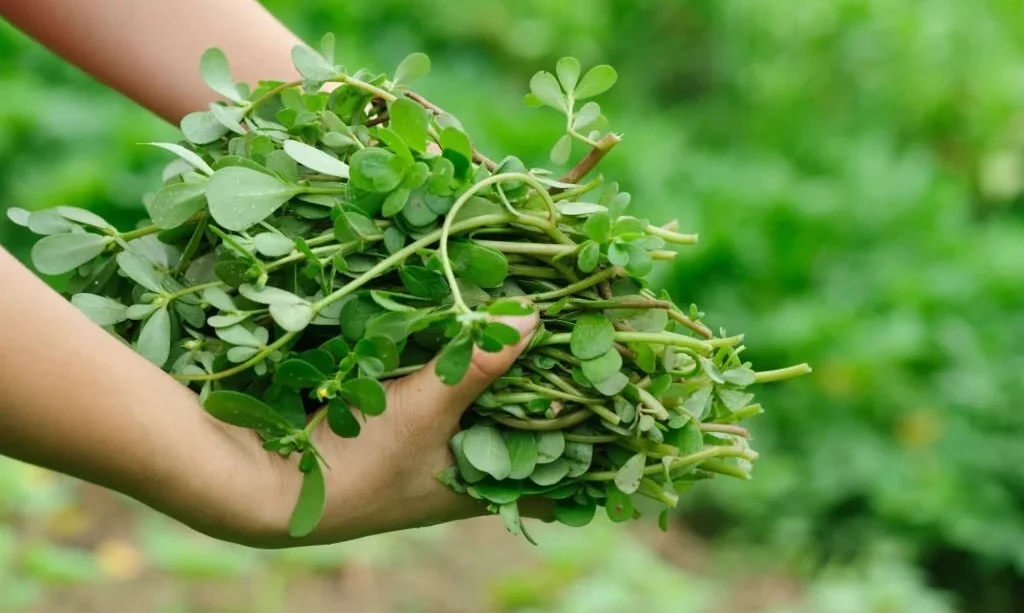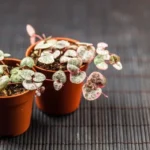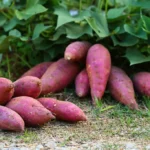Are you dealing with an unwanted guest in your garden, a tenacious weed known as purslane? This plant might seem harmless with its succulent leaves and cheerful yellow flowers, but it can swiftly overtake your garden if left unchecked. This article is your guide to reclaiming your green space and showing that pesky purslane who’s boss.
- Kills yellow and purple Nutsedge, Kyllinga and over 50 other tough weeds
- For Northern and Southern turf grasses
- Kills Weeds, Not Lawns
- Rainproof in 2 hours
- Ready to use—no mixing
Purslane
Before we jump into the battle plan, let’s get to know our enemy a bit better.
- Meet the Invader: Purslane, also known as Portulaca oleracea, is a common weed that thrives worldwide. It’s a hardy, creeping plant with fleshy leaves and yellow flowers that open in sunlight. Don’t be deceived by its delicate appearance, though; this plant is a real garden conqueror.
- Why the Fuss?: Purslane is a survivor. It spreads quickly, competes with your garden plants for precious resources, and can regrow from tiny fragments of stem left in the soil. This plant also produces a huge number of seeds that can stay viable in the soil for many years. If left uncontrolled, purslane can swiftly take over your garden and become a real headache to get rid of.
Armed with this knowledge, we can better understand how to defeat purslane. Let’s move on to the actual removal methods.
Mechanical Control Methods
So, how do we reclaim our garden from the clutches of purslane? One method is good old-fashioned elbow grease!
- Pulling It Out: One of the most straightforward ways to remove purslane is simply to pull it out by hand. Get a firm grip at the base of the plant and pull slowly but firmly to ensure you get as much of the root as possible. Be warned, though: any bits of purslane left behind can regrow, so you’ll want to be as thorough as possible.
- Digging It Up: For larger infestations, you might want to use a hoe or garden fork to dig up purslane. Again, aim to remove as much of the plant as possible, especially the root.
- Timing is Everything: The best time to remove purslane is in early summer before it gets a chance to produce seeds. Remember, once it seeds, it can lie dormant in the soil for years!
Chemical Control Methods
When mechanical control isn’t enough, or if your garden is under a serious purslane invasion, you might need to bring in some heavier artillery: herbicides.
- Choosing Your Weapon: Many common garden herbicides can be effective against purslane. Look for ones that contain glyphosate or 2,4-D. Always read and follow the instructions on the label for the safest and most effective use.
- Apply With Care: When using herbicides, timing and precision are key. Apply on a calm day to avoid wind drift, and aim to apply when the purslane is actively growing for the best results.
Remember, chemical control should be a last resort, and it’s always essential to use these products responsibly to protect the rest of your garden and the environment.
- This bag has been repaired due to damages to packaging during warehouse handling. Derived from the shell of the cocoa bean, natural dark, fade resistant color and pleasing cocoa aroma
- Very lightweight and easy to spread and will not burn vegetation
- Speeds soil warm-up in the spring and protects perennial root structures
- PLEASE NOTE this product is unsafe for dogs and is not for human consumption
Preventive Measures
As the saying goes, “Prevention is better than cure”. This is especially true when dealing with persistent weeds like purslane. Let’s look at some preventive measures to keep this unwelcome guest at bay.
- Maintain Healthy Soil: Healthy soil promotes the growth of your garden plants, making it harder for weeds like purslane to take over. Regularly add organic matter to improve your soil’s health.
- Use Mulch: Mulch isn’t just a pretty addition to your garden. It acts as a barrier, making it harder for purslane seeds to reach the soil and germinate.
- Monitor Your Garden: Keep an eye on your garden. Regular check-ups can help you spot and remove any young purslane plants before they have a chance to take over.
Conclusion
There you have it! Your comprehensive guide to evicting purslane from your beloved garden. Remember, the keys to winning the battle against purslane are understanding the weed, timely and thorough removal, using herbicides responsibly if needed, and, most importantly, prevention. With these strategies in hand, you can maintain a beautiful, purslane-free garden. Happy gardening, everyone!





